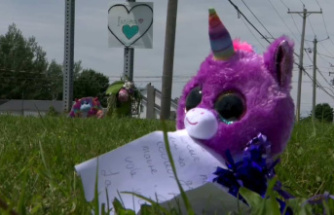As President Donald Trump campaigned and rose to power, the number of Patriot groups operating in the U.S. fell by 38 percent, according to an analysis by the Southern Poverty Law Center.
SPLC, which monitors hate groups around the country, released its annual report on such activity Wednesday. It found that Patriot groups, which are “composed of people who believe the federal government is plotting to deprive Americans of their liberties,” actually dropped in 2016 during the presidential campaign. Although the number of such groups usually fall as Republican administrations take power, the change this time was different.
“What was really happening is that Donald Trump is so revered by so many people in these groups that they have essentially stood back thinking that Donald Trump is going to do all the things that they wish they could do by themselves,” said SPLC Senior Fellow Mark Potok. “In many ways, Donald Trump has co-opted their issues.”
Those issues include land use, gun rights, opposition to immigration and the perception that Muslims are a threat to the country. SPLC found that as Trump galvanized supporters around those issues, they felt less of a need to organize on their own.
“Why attend a rally when you find just as much anti-government vitriol and whole lot more excitement” from people at a Trump rally, Potok asked.
Trump made anti-immigration and anti-Muslim rhetoric a hallmark of his campaign, calling for mass deportations and a Muslim ban. Three weeks ago, the president signed an executive order suspending the U.S. refugee resettlement program and immigration from seven Muslim-majority nations. That order is being challenged in court, but there are reports the administration is considering future action to restrict legal immigration.
The administration is also reportedly considering changing a U.S. program designed to fight all aspects of extremism to focus solely on Muslims, instead of also including people like white supremacists.
Patriot groups hit a high in 2012, experiencing a steady incline following the election of President Barack Obama. In 2008, there were 149 such groups. By 2012, there were 1,360. In 2016, there were 623, down from 998 in 2015.
Militias, which are the armed wing of the Patriot movement, fell 40 percent between 2015 and last year. There were 165 in 2016, down from 276.
Some of the drop in Patriot group activity can also be attributed to several high-profile cases involving the Bundy family and disagreements over federal lands in Nevada and Oregon. Many involved were arrested and charged with crimes, and even though several were acquitted, SPLC said it likely sent a signal to Patriot movement that the government wouldn’t put up with such incidents.
Potok also said fewer members on the radical right are active in real-life hate groups, instead opting for the anonymity of the internet.
“More and more people on the radical right are not engaging in brick and mortar hate groups,” Potok said. “Many more of them are lurking on the internet until the day that they decide in some cases that action is needed.”
Patriot movement group Oath Keepers, which lost 71 chapters in 2016, still maintained 323 Facebook pages associated with it. And it wasn’t the only to lose chapters: We the People, went from 91 chapters to one. All 37 chapters of Get Out of Our House disappeared.
Our editors found this article on this site using Google and regenerated it for our readers.










